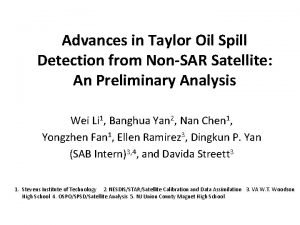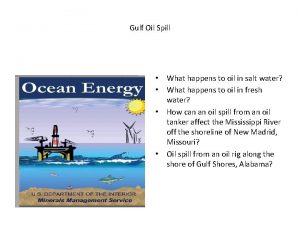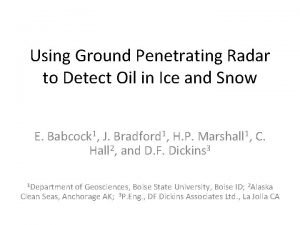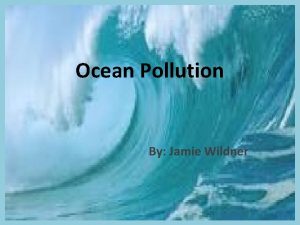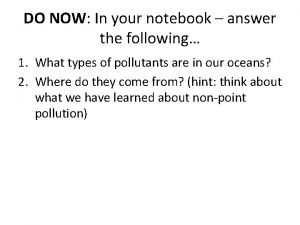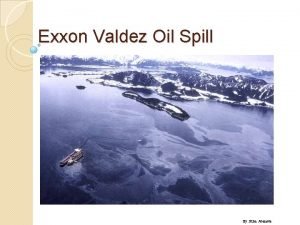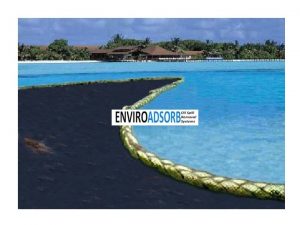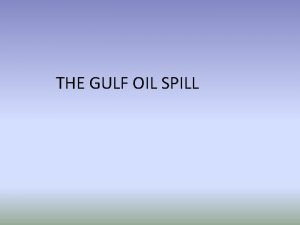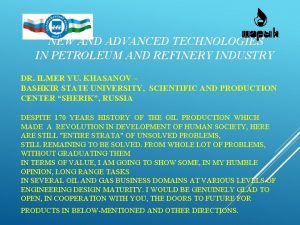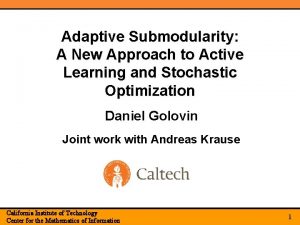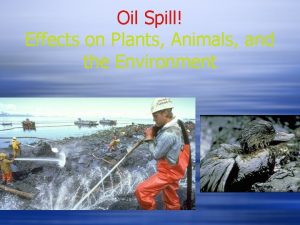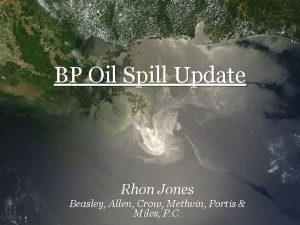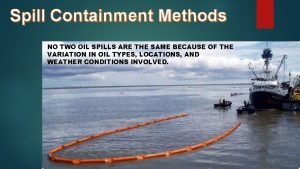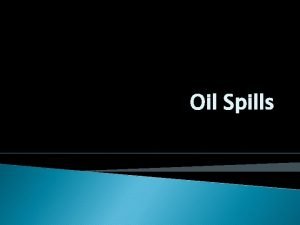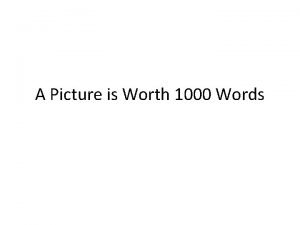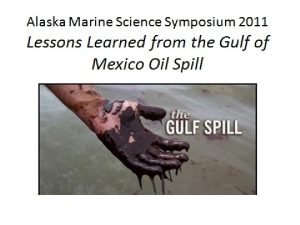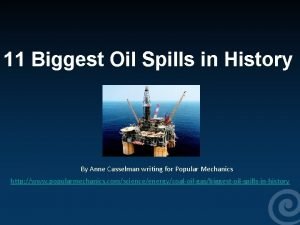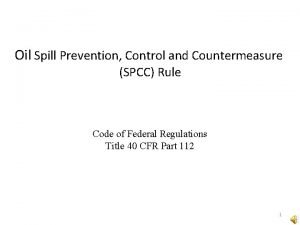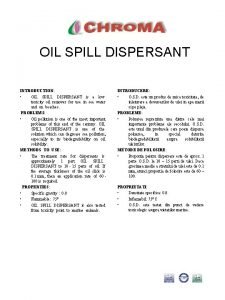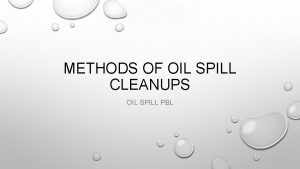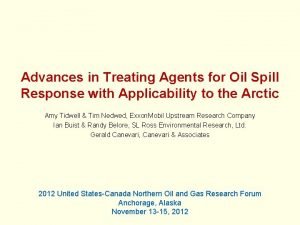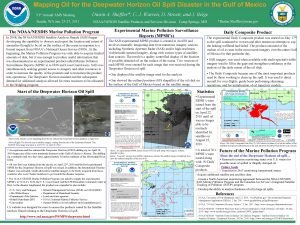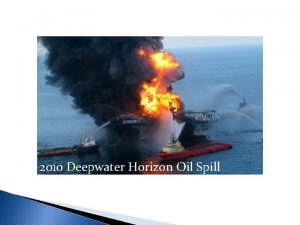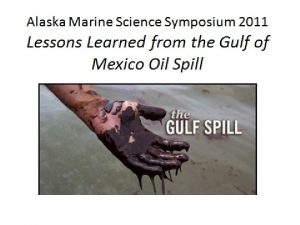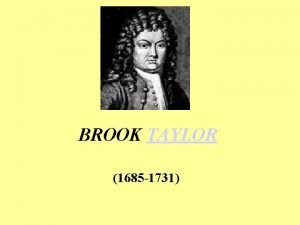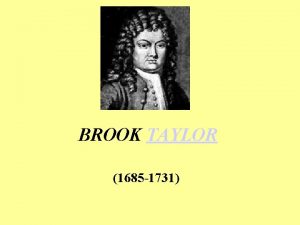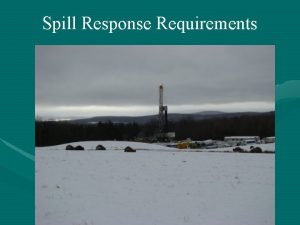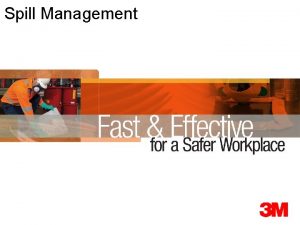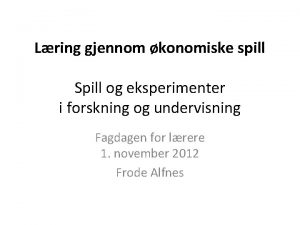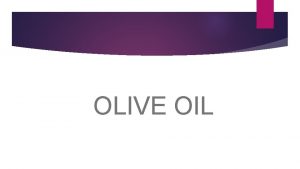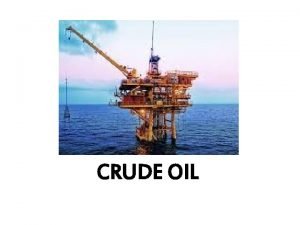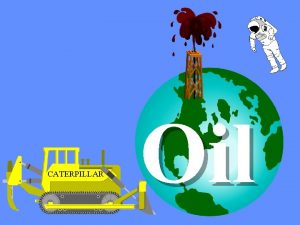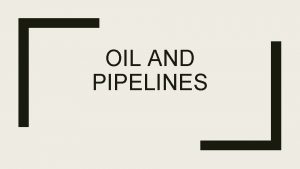Advances in Taylor Oil Spill Detection from NonSAR





















- Slides: 21

Advances in Taylor Oil Spill Detection from Non-SAR Satellite: An Preliminary Analysis Wei Li 1, Banghua Yan 2, Nan Chen 1, Yongzhen Fan 1, Ellen Ramirez 3, Dingkun P. Yan (SAB Intern)3, 4, and Davida Streett 3 1. Stevens Institute of Technology 2. NESDIS/STAR/Satellite Calibration and Data Assimilation 3. VA W. T. Woodson High School 4. OSPO/SPSD/Satellite Analysis 5. NJ Union County Magnet High School

Background: MODIS Terra Case Study • Location: Taylor Energy Oil Platform • Oil spill can be easily detected by human eye when there is sun-glint exist. • Example: RGB image T 20160508 T 20110612 T 20130617 (Detected by OSPO/SAB Oil Team)

Can It Be Detected Automatically Using Non-SAR Satellite Observations? Oil and Water Reflectance Statistics 0. 40 Reflectance 0. 35 Ave. (Oil) Ave. + Std. (Oil) Avg. - Std. (Oil) Ave. (Water) Ave. + Std. (Water) Ave. - Std. (Water) 0. 30 0. 25 0. 20 0. 15 0. 10 0. 05 400 800 1200 1600 2000 Wavelength (nm) • • Oil reflectance is always higher than sea water The water reflectance will quickly decrease with the wavelength increase, even under the sun-glint situation, while oil has relative flat reflectance over visible and NIR wavelength range

Threshold Method • • NDOI: Normalized Difference Oil Index. NDOI = (R 469 -R 859)/(R 469+R 859) R 555 > 1 NDOI < 2

Threshold Method: Example 1 (20110612) Normalized R at 555 nm Oil feature detected Oil thresholds: R 555 > 0. 3 NDOI < 0. 15 Case: T 20110612 RGB image NDOI

Threshold Method: Example 2 (20130617) Normalized R at 555 nm Oil feature by threshold Oil thresholds: R 555 > 0. 2 NDOI < 0. 015

Threshold Method: Example 3 (20160508) Normalized R at 555 nm Oil feature by threshold Oil thresholds: R 555 > 0. 2 NDOI < 0. 048

Challenge The threshold values will change case by case due to the sun-glint intensity under different solar/viewing angles, wind as well as oil type.

Our Thought u Can we simulate the reflectance from oil and water and use machine learning techniques to identify them? u. Oil and water have different refractive indices in visible and NIR. The higher refractive Index of oil will result in larger surface reflectance. From literature we find the refractive index of oil varies with oil type and we used 1. 38 -1. 46 range in this test. The refractive index of water is tabulated from Segelstein 1981.

Ocean Surface Reflectance Modeling

Rough Surface in DISORT 3 Model

Validation Result by NASA CAR Measurement MODEL MEASUREMENT

RT Model Simulation Design • During sun-glint, the signal received from satellite comes mostly from water surface, the water leaving radiance can be ignore. • We setup a rough surface model to simulate the water and oil sun-glint reflectance in MODIS channels, separately. Then we mix the reflectance of oil and water cases by assuming the fraction of oil (fraction = 1 is oil, fraction=0 is water). • We generated 50, 000 cases for oils and water separately, to cover the possible solar and satellite viewing angle in sun-glint area, as well as wind speed range from 0 to 10 m/s. • The multi-layer neural network (MLNN) was used to train these 50, 000 cases. Using the trained net, we can find the fraction from the satellite measured radiance and wind speed. • We assume the oil refractive index is from 1. 38 to 1. 46.

Retrieval Flowchart Geometry angles Wind speed Refractive index(water, oil) RT model R_w: simulated MODIS water reflectance R_o: simulated MODIS oil reflectance 50, 000 mixed R with oil fraction f R = f*R_o + (1 -f)*R_w MLNN train Geometry angles Wind speed Refractive index(water, oil) net MODIS measurement wind speed Oil fraction f

Threshold and Automatic Oil Detection Comparison: Example 1 Normalized R at 555 nm Oil feature by threshold Case: T 20110612 Oil feature by MLNN

Threshold and Automatic Oil Detection Comparison: Example 2 Normalized R at 555 nm Oil feature by threshold Oil feature by MLNN

Threshold and Automatic Oil Detection Comparison: Example 3 Normalized R at 555 nm Oil feature by threshold Oil feature by MLNN

Threshold and Automatic Oil Detection Comparison: Example 4 Normalized R at 555 nm Oil feature by threshold Oil feature by MLNN

Threshold and Automatic Oil Detection Comparison: Example 5 Normalized R at 555 nm Oil feature by threshold Oil feature by MLNN 20140503

Summary • One threshold method has been developed to detect Taylor oil spills using MODIS Terra observations of reflectance: • NDOI = (R 469 -R 859)/(R 469+R 859) • R 555 > 1 • NDOI < 2 where 1 and 2 vary with sun-glint intensity, wind speed, and oil type. • An automatic oil detection method is further developed by using multi-layer neural network (MLNN) with Radiative transfer model simulation. – The preliminary results show that this automatic oil detection algorithm works very well and can detect major oil spill features. – More studies are need to finalize the algorithm.

References • Fan, Y. , Li, W. , Gatebe, C. K. , Jamet, C. , Zibordi, G. , Schroeder, T. , and Stamnes, K. , (2017) “Atmospheric correction and aerosol retrieval over coastal waters using multilayer neural networks”, submitted to Remote Sensing of Environment. • Y. Fan, W. Li, K. J. Voss, C. K. Gatebe, and K. Stamnes, (2016), A neural network method to correct bidirectional effects in water-leaving radiance, Appl. Opt. , 55(1): 10 -21, DOI: 10. 1364/AO. 55. 000010. Z Z. Lin, W. Li, C. Gatebe, R. Poudyal, and K. Stamnes. (2016), Radiative transfer simulations of the two-dimensional ocean glint reflectance and determination of the sea surface roughness. Appl. Opt. , 55(6): 1206– 1215. T. Tanikawa, W. Li, K, Kuchiki, T. Aoki, M. Hori, and K. Stamnes, (2015), Retrieval of snow physical parameters by neural networks and optimal estimation: case study for ground-based spectral radiometer system, Optics Express 23(24), DOI: 10. 1364/OE. 23. 0 A 1442. • • • Z. Lin, S. Stamnes, Z. Jin, I. Laszlo, S. -C. Tsay, W. Wiscombe, and K. Stamnes, (2015), Improved discrete ordinate solutions in the presence of an anisotropically reflecting lower boundary: upgrades of the DISORT computational tool, J. Quant. Spectrosc. Radiat. Transfer 157, 119– 134.
